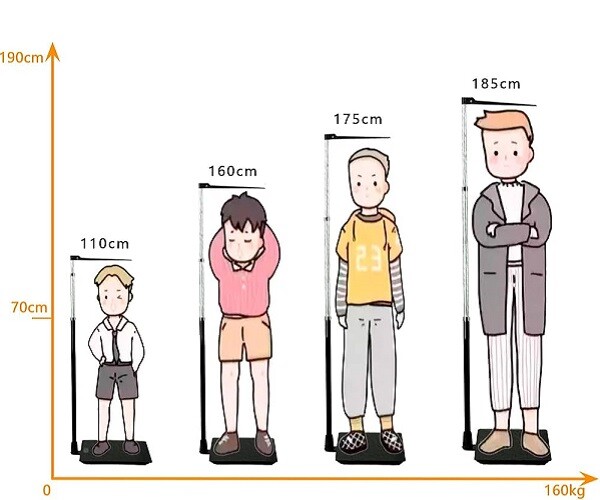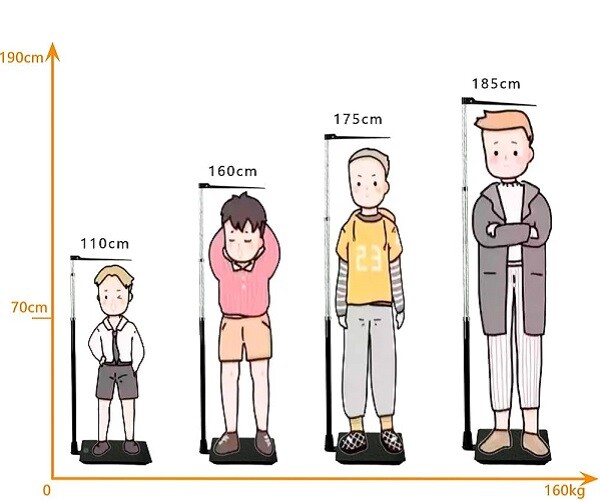Researchers tracked the growth of children aged 6-12 years old in Nordic countries and found that they grew, on average, 0.43 cm per month from March to May and 0.28 cm per month from September to November. There are three reasons for this seasonal growth spurt:
First, longer days in spring and stronger UVB radiation in sunlight. Children tend to spend more time outdoors, and their skin synthesizes more vitamin D from the sun, contributing to their height growth.
Second, the mild spring temperatures boost metabolism and improve sleep quality. As we know, the peak secretion of growth hormone (GH) usually occurs during deep sleep at night.

With longer days in spring, melatonin secretion decreases, and children tend to fall into a deeper sleep. This increased GH secretion enhances the likelihood of growth and elongation of long bones (arms, thighs, calves, and other limbs).
Third, warmer weather encourages children to engage in outdoor play and activities. Jumping exercises like running, ball games, and skipping rope can stimulate the proliferation of cartilage cells and promote the vertical development of long bones.
Thus, if parents follow this spring growth plan, their children’s height will flourish like spring bamboo shoots, potentially gaining an additional 5-10 cm.

Nutrition: Fueling Bone Development
Nutrition is the foundation for height development, but eating more does not necessarily mean better results. It’s crucial to consume the right types of food and ensure adequate nutrition. A specialist suggests a spring growth-boosting nutrition formula for children.
Calcium + Vitamin D: Golden Partners for Bone Development
Calcium is the core element for bone growth, and vitamin D enhances calcium absorption while reducing calcium loss. Children should drink 500ml of milk daily and include calcium-rich foods like tofu, egg yolks, shrimp, seaweed, dried fish, sesame seeds, celery, and green vegetables in their diet.
Spring offers abundant sunlight, and sunbathing for 15-30 minutes daily aids in vitamin D synthesis.

Ensure adequate nutrition.
High-Quality Protein: The Building Blocks of Bones
Protein is second only to calcium in importance for height development. It is not just a major component of bones and muscles but also forms various hormones that promote height growth. Therefore, children need to consume sufficient protein daily.
Suggestion: One egg + 50g of lean meat (including beef, pork) + one cup of milk + fish + soy products daily.
Zinc + Vitamin A: Boosting GH Secretion
Bone development relies on the continuous proliferation and calcification of cartilage cells, and zinc and vitamin A can enhance GH synthesis and accelerate bone growth. Thus, it’s essential to include zinc and vitamin A-rich foods in children’s daily diets.
Zinc-rich foods include shellfish (such as oysters), organ meats, and nuts and seeds (like almonds, peanuts, beans, and millet), while vitamin A-rich foods include animal liver, egg yolks, lean meat, carrots, sweet potatoes, and pumpkins.

Exercise: The Growth Accelerator
Moderate exercise boosts metabolism, accelerates fat burning, stimulates GH secretion, relieves stress, and improves sleep quality. However, parents should pay attention to the method, timing, and intensity of exercises. The following types of exercises are most effective in helping children grow taller.
Aerobic Exercises: Activities like jogging, swimming, and cycling can stretch the spine, promote whole-body blood circulation, and provide a balanced supply of nutrients to the cartilage. Children can engage in these activities for 30 minutes to an hour daily.
Jumping Movements: These exercises can deeply stimulate the growth plates, increase bone flexibility, and promote bone development. Options include skipping rope, throwing and catching a ball, and reaching high.
Note that exercises that excessively increase muscle mass, such as pull-ups and chin-ups, may draw nutrients away from bones and hinder height growth, so they should be performed less frequently.

Physical activity and exercise.

Deep Sleep: Peak GH Secretion Time
Growth hormone acts on the liver and cartilage in the epiphyseal bone, and by activating a substance called “growth interferon,” it promotes bone elongation and expansion, thereby increasing children’s height.
GH secretion typically peaks within 1-2 hours of falling asleep, with two secretion peaks occurring between 11 PM and 1 AM and around 5-7 AM. To achieve optimal GH secretion, children need to go to bed early and wake up early, develop a healthy daily rhythm, and improve sleep quality.
Fixed Schedule: Maintain a consistent bedtime every day. Aim for bedtime before 9:30 PM. This way, after 1-2 hours, around 11 PM, children are more likely to enter deep sleep.
No Electronic Devices an Hour Before Bedtime: Blue light from screens inhibits melatonin secretion and disrupts sleep.

Deep sleep.
Maintain a Quiet and Comfortable Sleeping Environment: Ensure a suitable room temperature (20-22°C), soft lighting, and minimize noise disturbances.
Avoid Eating Before Bedtime: Refrain from consuming oily and stimulating foods for dinner to prevent sleep disturbances. After a child turns one year old, it’s best to avoid giving them milk or any food within two hours before bedtime.
In spring, everything is in a state of “growth,” and children’s bodies quietly flourish like young spring shoots in the gentle spring breeze.
Therefore, parents should adapt to seasonal changes and guide their children in physical activity, nutrition, and sleep. Additionally, pay attention to mental health, reduce anxiety and stress, and foster optimal height development.































